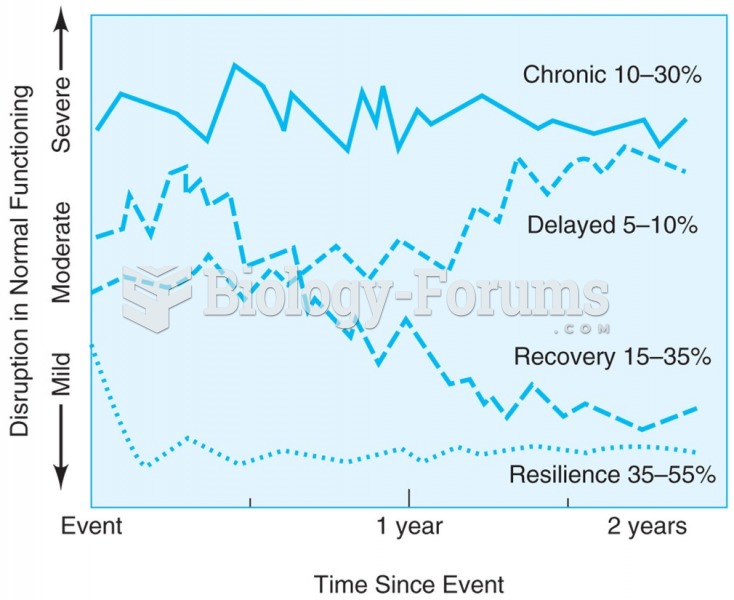Answer to Question 1
Answers to this question will vary. Asking about the release of domesticated cats and dogs into the wild rather than resorting to euthanasia might be an additional interesting question to pose. Is it better for the cat or dog to be released to fend for itself, killing wild animals (one of the largest causes of death among song birds is predation by cats), and dying unpleasantly after a possible short life (cats and dogs will be eaten by coyotes, cats will be injured by raccoons, etc.)?
Answer to Question 2
Not all the diseases listed by the CDC have information about precautions. Some of the diseases () have been added to the list because of bioterrorism potential. Below is a list of the CDC listed emerging or re-emerging diseases. Risk and precaution information has been included for some.
Drug-resistant infections (antimicrobial resistance)
Bovine spongiform encephalopathy (Mad Cow) and variant Creutzfeldt-Jakob disease (vCJD)unclear what the risk is; avoid eating beef or beef products from a country with indigenous cases
Campylobacteriosis
Chagas diseaselow risk; spray infested houses; insecticide-impregnated bed nets may reduce risk for travelers who cannot avoid camping or sleeping outdoors in poorly constructed houses in endemic areas
Choleralow risk; mainly a risk if drinking contaminated water or eating poorly cooked or raw seafood in disease-endemic areas
Cyrptococcosis
Cryptosporidiosis (Crypto)
Cylcosporiasis
Cysticercosislow risk; do not eat raw or undercooked pork; wash hands, wash and peel all raw vegetables and fruit before eating; drink only bottled or boiled water
Dengue fever
Diphtheria
Ebola hemorrhagic feverlow risk; most often in rural areas of developing countries; found in Africa; reservoir host is unknown; avoid locations where an outbreak is occurring
Escherichia coli infection
Group B streptococcal infection
Hantavirus pulmonary syndromerare; rodent control is best prevention
Hepatitis C
Hendra virus infection
Histoplasmosisfungu s is common in central and eastern United States; avoid areas with bird or bat droppings because this is where fungus grows
HIV/AIDS
Influenza
Lassa feverlow risk; Western Africa; exposure to infected rodents in most likely source of human infection
Legionnaires' disease (legionellosis) and Pontiac fever
LeptospirosisTravel ers participating in recreational water activities, such as whitewater rafting, adventure racing, or kayaking, in areas where leptospirosis is endemic or epidemic could be at increased risk for the disease, particularly during periods of flooding. Avoid contact with contaminated water.
Listeriosismedium risk; thoroughly cook raw food from animal sources; wash raw vegetables thoroughly before eating; keep uncooked meats separate from vegetables and from cooked foods and ready-to-eat foods; avoid unpasteurized milk or foods made from unpasteurized milk; wash hands, knives, and cutting boards after handling uncooked food. Consume perishable and ready-to-eat food as soon as possible.
Lyme disease
Malaria
Marburg hemorrhagic feverlow risk; found in Africa but precise geographic range is unknown; reservoir host is unknown; avoid locations where an outbreak is occurring
Measles
Meningitis
Monkey pox
MRSA (Methicillin Resistant Staphylococcus aureus)
Nipah virus infection
Norovirus (formerly Norwalk virus) infection
Pertussis
Plagueendemic in rodent populations in rural areas of Americas, Africa, and Asia; risk is small; use DEET, avoid sick or dead animals or rodent nests and burrows, avoid visiting areas where recent plague epidemics or epizootics have occurred; bring antibiotic with you
Polio (poliomyelitis)should be fully immunized if going to a country where polio still occurs
Rabiesusually low risk but not if camping in rabies endemic countries, can be vaccinated
Rift Valley feverlow risk; occurs primarily on the continent of Africa and into the Middle East; precautions include using insect repellent on exposed skin surfaces when outdoors, particularly during the day; wear long-sleeved shirts and long pants when outdoors; when possible, stay in hotels or resorts that are well screened or air-conditioned and take measures to reduce and exclude mosquitoes; use of bed nets is recommended if mosquito-proof accommodations are not available.
Rotavirus infectionfairly common, usually not fatal in immune competent individuals; vaccination is possible
Salmonellosis
SAR (Severe acute respiratory syndrome)
Shigellosisfairly common infections; wash hands frequently; drink treated or boiled water only, eat only cooked vegetables and fruit or fruits that you peel yourself
Smallpox
Sleeping sickness (Trypanosomiasis)
Tuberculosis
Tularemiaoccurs in the United States, use insect repellent (ticks vector); cook food thoroughly; make sure water is from safe source
Valley fever (coccidioimycosis)
VISA/VRSAVancomycin-Intermediate/Resistant (Staphylococcus aureus)
West Nile virus infection
Yellow feverrarely causes illness in travelers; found primarily in South America and West and Central Africa during rainy season, vaccination is recommended; prevent exposure to mosquitoes, use DEET; wear long-sleeved shirts and long pants







